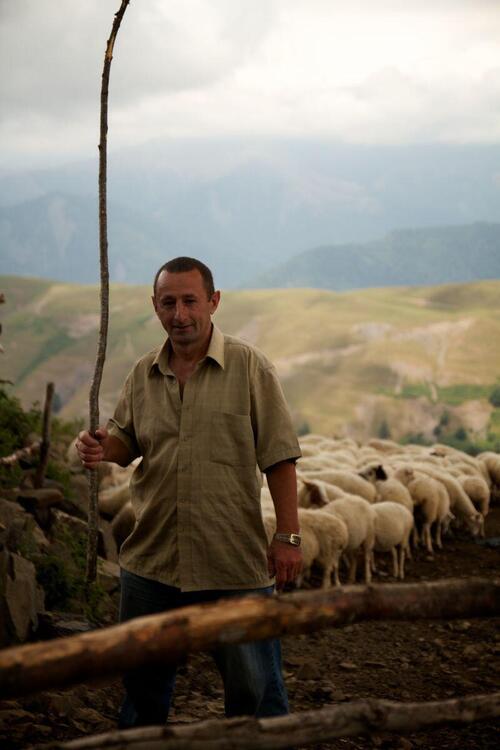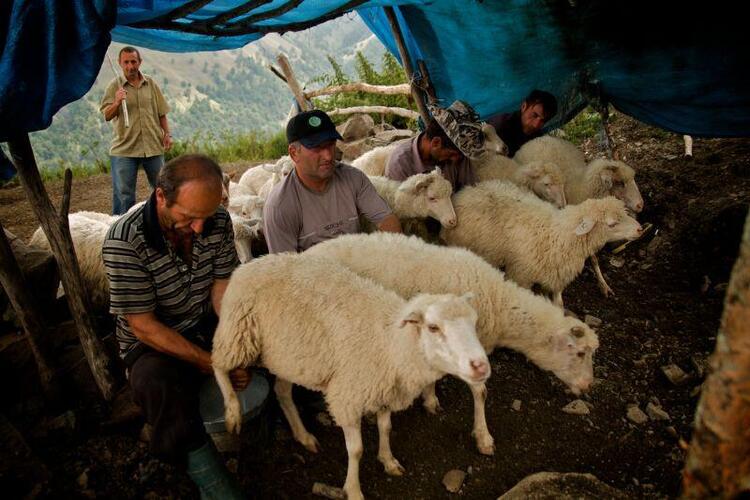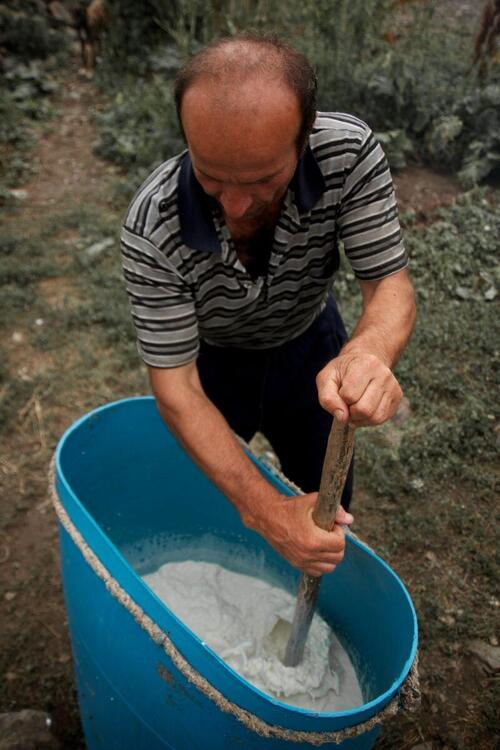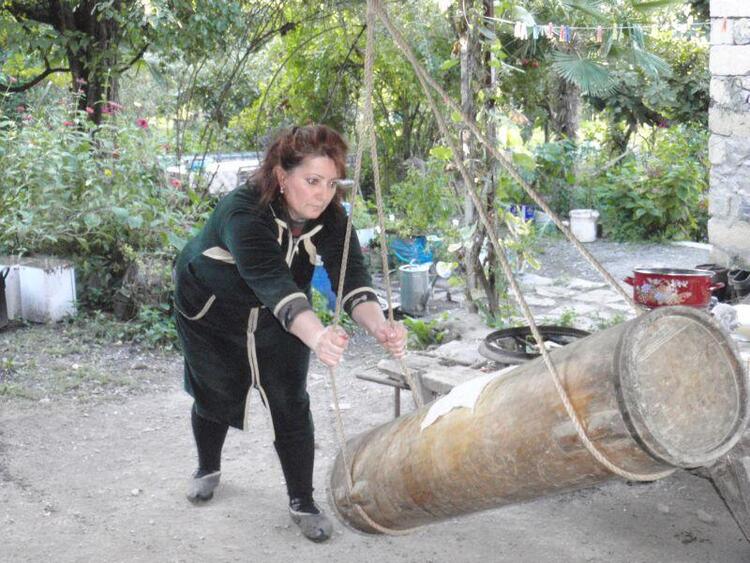

One of the most significant of all Tsakhur crafts is the manufacture of woollen goods. The processing starts with the shorn wool, which is washed, dried and then worked on a special comb called an 'aga'. The wool can be spun in various different ways with the use of both hand-spindles and drop-spindles. The processed wool is made into material for the production of clothes, shawls and bags, or is woven into carpets, rugs and socks. In early times, a Tsakhur bride was expected to knit a pair of socks for every member of the groom's extended family prior to the wedding. There is also a high demand for the manufacture of thick felted wool which is used to make shepherd's winter coats, waist-length fleeces, and lined quilted jackets. The Tsakhur are also known for their bright and varied carpets made with yarn that is dyed with natural plant extracts such as madder and henna.
Skins obtained from the flocks are also used by the Tsakhur to make various leather products. These include coats with long, false sleeves (q 'arqv), hats, and products for storing cheese (nurtel and t 'ik 'iy). Bridles, whips, ropes, belts, bags and saddles are also made but usually from cow skins.
Woodworking is widespread among the Tsakhur and many household items are manufactured from wood, including spoons, scoops, chests, troughs, butterchurns, breadboxes, cradles, barrels, saddles, musical instruments, and wagons, to name just a few.
Tsakhur master carpenters of old would carve decorative patterns for the ceilings and columns of mosques and homes of the wealthy. They would also make doors, windows and household furniture.
There are many more crafts which the Tsakhur have excelled in: smithing, metalwork, cobbling, jewel crafting, pottery, tailoring. Still to this day, a number of these continue to be practiced by some craftsmen.
In the past, a fair amount of trade passed through Tsakhur lands. Relations existed with Georgia, Russia, Turkey and Iran, with whom they bought and sold goods. During the Caucasian Albanian period, a trade route known as the Leket Way ran through the villages of Mukhakh, Kalyal and on into Dagestan. A way station called the Caravan Saray was located on this route which now lies in ruins. Due to dangerous conditions, passage on the route came to a halt during winter and tunnels were built in places where there was a chance of avalanches. The route went through the Dindiyski Pass, in which shelters were constructed which could protect travellers during times of blizzard or bad weather.

